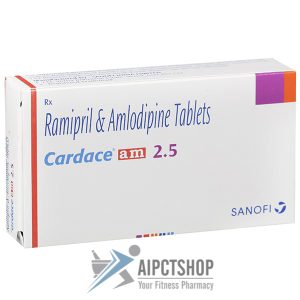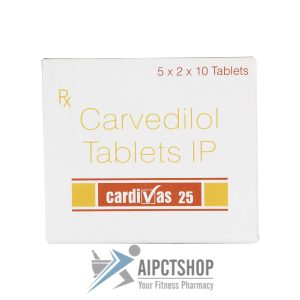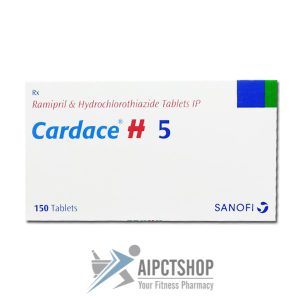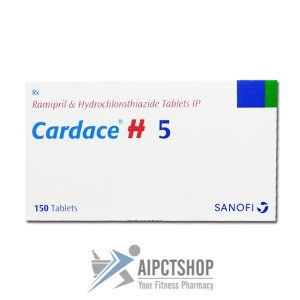Cardace general information
What is Cardace used for?
Cardace tablets (also known as Altace) are used to treat mild to moderate essential hypertension, which is high blood pressure when at rest, by lowering blood pressure to normal resting levels. This reduces risk of stroke, heart attack and end organ damage such as kidney disease. Cardace is also used to treat congestive heart failure, by helping weakened heart muscles pump more efficiently and reducing feelings of breathlessness on exertion. Cardace tablets are also used to reduce risk of cardiovascular disease in patients over 55 years who have a history of heart attack, coronary artery disease, stroke or peripheral vascular disease, or reduce need for surgery to replace damaged blood vessels; also in people with diabetes who also have other risk factors like high cholesterol or high blood pressure or who smoke. Cardace can be used on its own or with a diuretic, which helps get rid of excess water that is retained in body tissues and can cause swelling (oedema).
How does Cardace work?
Cardace tablets (also known as Altace) contain ramipril, which is a prodrug that is converted in the liver to its active form ramiprilat, a potent and long acting Angiotensin Converting Enzyme (ACE) inhibitor. Ramipril in Cardace prevents the formation of angiotensin II, a hormone that has several actions involved in regulating blood pressure, which is the force needed to pump blood around the body. Angiotensin II causes salt and water retention by the kidneys, and causes blood vessels to constrict (narrow); this increases blood volume while at the same time reducing blood vessel volume, which increases blood pressure. Ramipril in Cardace inhibits the conversion of angiotensin II from angiotensin I, which allows blood vessels to relax and widen, reducing the force needed by the heart to pump blood around the body, reducing its workload and lowering blood pressure.
What does Cardace contain?
Cardace tablets contain the active ingredient ramipril an Angiotensin Converting Enzyme (ACE) inhibitor, which widens blood vessels and lowers blood pressure.
Treating hypertension (high blood pressure) with Cardace
Cardace tablets contain ramipril, an Angiotensin Converting Enzyme (ACE) that is used to treat hypertension, which is high blood pressure when at rest, in people with high blood pressure who are at increased risk of cardiovascular disease, including stroke and heart attack. Ramipril in Cardace inhibits the formation of angiotensin II, a hormone that has several actions involved in regulating blood pressure, which is the force needed to pump blood around the body. Cardace tablets relax and widen blood vessels, reducing the force needed by the heart to pump blood around the body, reducing its workload and lowering blood pressure.
Cardace for treating congestive heart failure
Cardace tablets contain ramipril, an Angiotensin Converting Enzyme (ACE) that is used to widen blood vessels and reduce the force needed for the heart to pump blood around the body. This helps weakened heart muscle, such as in congestive heart failure, to work more efficiently and reduces symptoms of breathlessness on exertion. You may also be prescribed a diuretic to help get rid of excess water that is retained in your body tissues and can cause swelling (oedema), as a result of congestive heart failure.
What are the side effects of Cardace?
The most commonly reported side effects when taking Cardace tablets include: dizziness, light-headedness, headache, fatigue, sleepiness, skin rash, nausea, cough.
When should Cardace not be used?
You should not use Cardace tablets if you:
- are allergic to ramipril or any ingredients in Cardace
- are pregnant or are breastfeeding
- have kidney or liver disease
- have diabetes, or have had angioedema (rapid swelling under the skin)
- have mitral stenosis, which is heart problems affecting the flow of blood away from the heart.
- are taking potassium tablets or potassium-containing salt substitutes
- are taking medicines that interact with Cardace , including: other antihypertensive medications, potassium-sparing diuretics like spironolactone, non steroidal antiinflammatories (NSAID) like diclofenac, insulin and some diabetic medication like glyburide, lithium for mood disorders
What medications interact with Cardace?
Several medications interact with Cardace tablets and should either not be taken while you are taking Cardace or only after discussion and instruction from your doctor:
- Drugs that cause a serious reaction with Cardace: other antihypertensive medications can cause blood pressure to fall too low (hypotension), potassium-sparing diuretics like spironolactone
- Drugs that affect Cardace: non steroidal antiinflammatories (NSAID) like diclofenac and aspirin
- Drugs that are affected by Cardace: and insulin and some diabetic medication like glyburide, lithium for mood disorders
How should Cardace be taken?
You should take your Cardace tablets with a glass of water, with or without food, once daily, depending on your doctor?s recommendations. Your doctor may increase your dose depending on what you are being treated for and your condition. Cardace tablets helps improve your condition but does not cure it, therefore, you should continue to take your Cardace for as long as your doctor recommends. Cardace may take a few weeks to lower blood pressure and you should keep taking your tablets even if you feel well, as often there are no symptoms for high blood pressure.
How long should you take Cardace?
Cardace tablets helps improve your condition but does not cure it therefore you should continue to take your Cardace for as long as your doctor recommends. Cardace may take a few weeks to lower blood pressure and you should keep taking your tablets even if you feel well, as often there are no symptoms for high blood pressure.
Missed dose of Cardace
If you miss a dose of Cardace tablets take it as soon as you remember, unless it is time to take the next dose, then skip the missed dose. Do not take a double dose.
How should Cardace be stored?
You should store your Cardace tablets below 25?C in a cool dry place.








Reviews
There are no reviews yet.